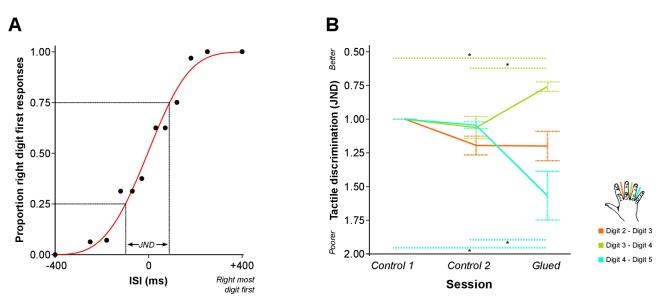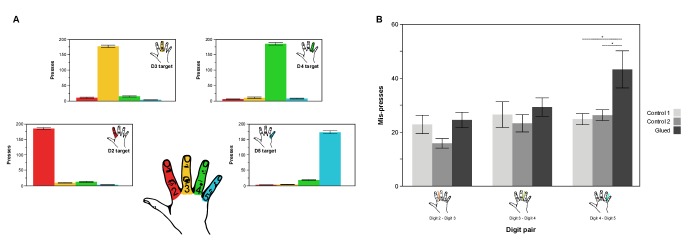Figure 4. Patterns of rapid experience-dependent remapping in SI mirror peripheral changes in tactile discrimination performance.
(A) An example of accuracy data from the temporal order judgment task. Accuracy scores (black dots) are illustrated for an individual participant and a single run assessing performance across D2-D3. Data are fitted with a logistic function (red line) from which the just noticeable difference (JND) is calculated: a measure of temporal tactile acuity; greater JND means poorer tactile discrimination. (B) Tactile discrimination improved significantly between D3 and D4, and worsened significantly between D4 and D5 after the gluing manipulation compared with the two control conditions. In summary, fMRI evidence of rapid cortical remapping (Figure 3) concurs with behavioural changes in tactile function (B), such that the digit pair with reduction in cortical overlap (D3–D4) also shows increases in tactile discrimination, whereas the digit pair showing increase in cortical overlap (D4–D5) demonstrates worsening of tactile discrimination *p<0.05 **p<0.005 Sidak corrected. Data in (B) are presented normalised to time point control 1; all statistics were performed on raw un-normalised data. ISI: inter-stimulus interval; JND: Just Noticeable Difference. Error bars represent standard error of mean.
DOI: http://dx.doi.org/10.7554/eLife.17280.011


